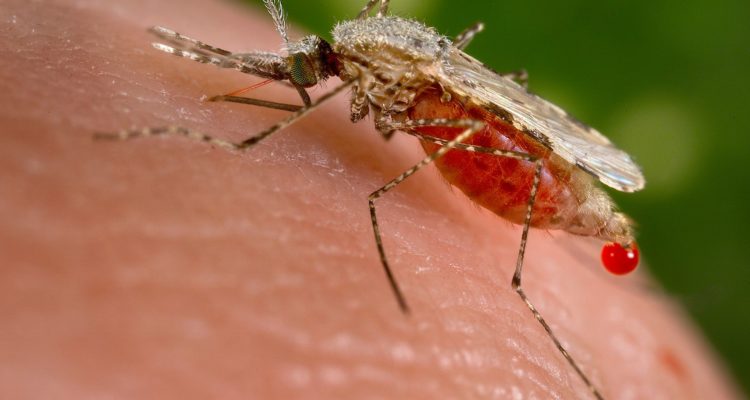On December 8, the World Health Organization released its latest annual report on the global fight against Malaria. The World Malaria Report found that progress against malaria has begun to stabilize after COVID related setbacks. Specifically, after a sharp rise...
Within the next five years, people over age 65 will outnumber children under 5 for the first time. This plays into other demographic changes such as urbanization: between 1975 and 2005, the number of older people living in urban areas quadrupled.
I don't know what's more sad - to actually hear about this news, or that I wasn't too surprised to hear it. In its first-ever study done on women's global health, the World Health Organization (WHO) found that the AIDS virus is the leading cause of death and disease among women aged 15 to 44. Unsafe sex is the leading risk factor in developing nations:
As Breast Cancer Awareness Month ended in the U.S. last week, new information reminds us that focus shouldn't be delegated to just one nation, let alone to just one month. AP had a story yesterday not only on the rise of breast cancer in poverty-striken nations, but on how women are developing the disease at a much younger age than in the developed world. Additionally (and not surprisingly), diagnosis is often made late in the game:
A short film from the World Health Organization shows how its disease early warning system works amidst a refugee crisis in Pakistan
by Adele Waugaman

Could a mobile phone be a key tool in the prevention of disease outbreaks and epidemics? Judges on the Wall Street Journal’s Technology Innovation Awards panel believe so.
DataDyne.org, a core partner in the United Nations Foundation and Vodafone Foundation’s mHealth (mobile health) program, has just won the prestigious award in the Healthcare IT category. An article in today’s paper explains:
In developing countries, gathering and analyzing time-sensitive health-care information can be a challenge. Rural health clinics typically compile data only in paper records, making it difficult to spot and to respond quickly to emerging trends.
With EpiSurveyor, developed with support from the United Nations Foundation and the Vodafone Foundation, health officials can create health-survey forms that can be downloaded to commonly used mobile phones. Health workers carrying the phones can then collect information—about immunization rates, vaccine supplies or possible disease outbreaks—when they visit local clinics. The information can then be quickly analyzed to determine, say, whether medical supplies need to be restocked or to track the spread of a disease.
A key advantage of EpiSurveyor is its sustainability: the software is free and open source, meaning that country health officials can download health surveys and modify them to meet local needs. For example, last month Kenyan health officials adapted EpiSurveyor to help track and contain a polio outbreak in the northern Turkana district.
Although large-scale immunization efforts eliminated the last indigenous cases of polio in Kenya in 1984, recent inflows of refugees fleeing violence in neighbouring Sudan renewed the threat of a polio epidemic. Health workers in Kenya used a web-enabled version of EpiSurveyor to help track and contain these outbreaks. On the DataDyne blog, health worker Yusuf Ajack Ibrahim noted how immediate access to health data enabled health workers to refine their emergency vaccination campaign:
Weakness noted were acted upon immediately. Some of the actions taken were redistribution of the vaccines, on the job training for our health workers, staff redeployment, immediate case investigation of suspected AFP cases, and change of [the] social mobilization strategy.
The Foundations invested $2 million to support the development, piloting and subsequent expansion of DataDyne’s EpiSurveyor health data-gathering software for mobile devices. In partnership with the World Health Organization and national ministries of health, the Foundations are helping to bring to scale the EpiSurveyor mHealth program in over 20 countries in sub-Saharan Africa.
The new mHealth Alliance, announced earlier this year by the UN Foundation, Vodafone Foundation and Rockefeller Foundation, will build on this effort by promoting thought leadership, global advocacy and public-private sector collaboration to help bring the smartest ideas in mHealth to scale around the globe.
UNICEF released figures yesterday showing a dramatic decrease in child mortality over the last 18 years. In 1990, some 12.5 million children died before they reached their fifth birthday. In 2008 that figure shrunk to 8.8 million children. The figure is still ghastly, but but represents a 28% decline in child mortality. This is progress.
So what can be attributed to this decline? Aid. Or, more accurately, internationally sponsored public health campaigns in the developing world.
Public health experts attribute the continuing decline to increased use of key health interventions, such as immunizations, including measles vaccinations, the use of insecticide-treated bednets to prevent malaria and Vitamin A supplementation. Where these interventions have increased, positive results have followed (Emphasis mine. Our friends at Nothing But Nets should be proud!)
True, there is still a long way to go to reaching the Millennium Development Goal of lowering by two-thirds the number of children who fail to reach the age of five. The UNICEF figures show that a small handful of countries--India, the Democratic Republic of the Congo, and Nigeria--account for a large proportion of under-five deaths. If child mortality can be brought to heel in those countries, the MDG may yet be reached.
The figures released by UNICEF show that this kind international intervention can work. If we want to achieve this MDG, we ought to scale up our financial and political committments to these issues. Or, in the words of then-candidate Barack Obama "make the Millennium Development Goals American Goals."
 Appendicitis is a weird illness. It’s more common in the wealthy world than the developing world, even though it doesn’t seem to be lifestyle based. Poor people in wealthy countries have the same low appendicitis rate. It’s more common now, all over the world, than it was fifty years ago but it isn’t contagious from person to person.
Appendicitis is a weird illness. It’s more common in the wealthy world than the developing world, even though it doesn’t seem to be lifestyle based. Poor people in wealthy countries have the same low appendicitis rate. It’s more common now, all over the world, than it was fifty years ago but it isn’t contagious from person to person.
We used to blame the appendix for this. We called it vestigial, and removed it at the drop of a hat. Charles Darwin himself told us it no longer had a purpose. We don’t need it to digest, and you don’t find it in other mammals.
We’ve got new research, though, and it’s not the appendix causing the trouble – it’s our modern lives. The appendix only started getting useless about a hundred years ago. It’s a reservoir for the healthy bacteria we need to recover from revolting intestinal ailments like diarrhea. When we don’t get sick that often, however, the immune system doesn’t have enough to do. Appendicitis is one result; allergies are another.
That’s also why appendicitis rates are lower in the developing world. Without consistent access to clean water, our immune systems – and our appendixes - have work to do. They help us fight off cholera and dysentery instead of getting all wound up and attacking our own bodies.
The 2009 MDG Report (pdf), leading into the 2010 MDG review conference that represents the last major recommitment before 2015, is both promising and disturbing. Actual progress has been made, but the economic crisis is cutting severely into those gains, and, at this pace, the world will fall far short of achieving the Goals.
Overall, the number of people living in poverty (under $1.25 a day) had dropped by 400 million from 1990 to 2005 (1.4 billion) despite the growth in world population, an astounding number that, on its own, is proof that the Goals are achievable. However, the economic crisis chiseled away at that progress, and 90 million more people are expected to be added back to those rolls this year. Success in reducing hunger worldwide is likewise being reversed.

